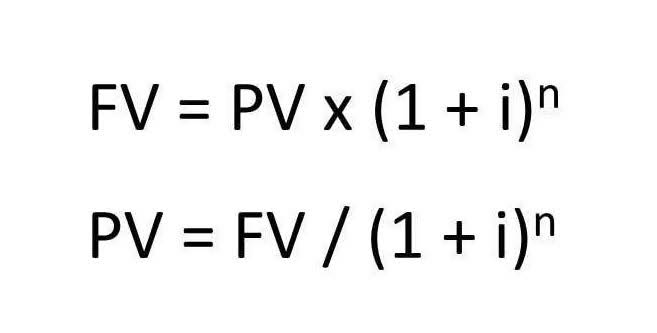Content
- Dispose Of Or Retire Fixed Assets
- Disposal Of Fixed Assets
- What Are The Benefits Of Asset Disposal For A Business?
- What You Will Learn To Do: Journalize Entries For Disposal Of Assets
- Disposal Of An Asset With Zero Book Value And Salvage Value
- Journal Entry For Gain On Disposal Of Fixed Assets
- Sale, Disposal Or Interagency Transfer Of Capital Assetsrecording Disposal Of Capital Assets
- Double Declining Balance Depreciation

The trade-in allowance of $5,000 plus the cash payment of $20,000 covers $25,000 of the cost. The company must take out a loan for $15,000 to cover the $40,000 cost. The trade-in allowance of $7,000 plus the cash payment of $20,000 covers $27,000 of the cost. The company must take out a loan for $13,000 to cover the $40,000 cost. Its cost can be covered by several forms of payment combined, such as a trade-in allowance + cash + a note payable.
However, it also means that a business can also incur losses if the compensation received is less than the carrying value of the asset being sold. Whatever the cost of the asset is will be its accumulated depreciation when it becomes fully depreciated. This is a case of asset disposal due to an asset reaching the end of its useful life (a.k.a. fully-depreciated asset). Since an asset account normally has a debit balance, we need to credit it to close it out.
Dispose Of Or Retire Fixed Assets
You’ll also want to create a liability record for the loan and record the loan as a debt. If the organization has not yet received the asset, it is still a current asset, not a fixed asset. Enter depreciation on the books for the total sum of assets or by asset type. The amount of accumulated depreciation plays a role in calculating any loss or gain at the disposal of the asset. Enter the total purchase cost, including any costs to ship, install or costs that ensure the safe and serviceable function of an asset.
The balance is usually 0.00 because the clearing account gets credited and the fixed-asset account is debited the same amount. To calculate the loss on disposal of an asset, subtract the accumulated depreciation from the original cost, and then subtract the sales price. In the example below, accumulated depreciation is $45,000; the original cost of the asset is $75,000; and the sales price is $10,000.
On a similar exchange, gains are deferred and reduce the cost of the new asset. The $99,000 cost of the new truck equals the $12,000 trade‐in allowance plus the $89,000 cash payment minus the $2,000 gain. Other circumstances could also apply, especially if special tax provisions covered purchase of the fixed asset.
Disposal Of Fixed Assets
The articles and research support materials available on this site are educational and are not intended to be investment or tax advice. All such information is provided solely for convenience purposes only and all users thereof should be guided accordingly. The asset’s book value on 10/1 of the fourth year is $1,500 ($6,000 – $4,500). The asset’s book value on 4/1 of the fourth year is $2,100 ($6,000 – $3,900). Equipment that cost $6,000 depreciates $1,200 on 12/31 of each year. Accumulated depreciation on the equipment at the end of the third year is $3,600, and the book value at the end of the third year is $2,400 ($6,000 – $3,600). Over time it has depreciated in value by £8,000 and is now worth £2,000.

Partial-year depreciation to update the truck’s book value at the time of sale could also result in a gain or break even situation. Make any necessary adjusting entry to update the Accumulated Depreciation balance so it is current as of the date of the disposal. Use this status to monitor your internal disposal processes before the asset is removed for final disposal. To finalize the disposal, you first need to transfer the assets to temporary storage while they’re being processed. At this point, the assets can no longer be assigned to users or transferred around your organization. From temporary storage, you can prepare the assets for disposal; for example, you could reclaim software and perform any security requirements that you have. This new ledger would be used in place of the 4200 ledger detailed in the Record the Sale of the Asset step above.
If the proceeds are less than book value, a loss on disposal has been realized. If the proceeds are more than book value, the result is a gain. The proceeds from the sale will increase cash or other asset account.
What Are The Benefits Of Asset Disposal For A Business?
This reduces the purchase cost balance, decreasing any loss on disposal. Such a receipt would show up in the Consideration received column. The second method is to post the transaction to Fixed assets – loss on disposal after disposal. The net effects are the same, but the second method would not show on the Fixed Asset Summary, because the transaction would not be posted directly to the asset’s subaccount. The entity would recognize the gain or loss from classifying the component as held for sale or disposal in discontinued operations.
Asset tags allow organizations to track equipment and other assets through their lifecycle to ensure maintenance and prevent loss. Basic tags can include QR, barcodes or serial numbers and organization contact information.
- To comply with the requirements set forth by the Government Accounting Standards Board, public entities must accurately track assets from acquisition through disposal.
- VAT is usually due on the sales of assets by VAT registered businesses.
- Discover what fixed assets inventory is, its importance, and the dissimilarity between these 2 notions in this article.
- These are the disposal of fixed assets at net book value, disposal with gain, and finally disposal with loss.
- Compute User Defined Depreciation will require special setup to accommodate the desired depreciation results in the year of an early disposition.
- Online platforms remove the burden of multiple manual entries, improve reporting and facilitate audit trails.
- Equipment that cost $6,000 depreciates $1,200 on 12/31 of each year.
These assets do not support daily business operations, but they can help to generate revenue. Such assets include interest from certificates of deposit, short-term investments and vacant land that will appreciate. Fixed assets include existing buildings and facilities that are under construction.
What You Will Learn To Do: Journalize Entries For Disposal Of Assets
“Salvage value” is the cash you receive when you sell the asset at the end of its useful life. Let’s say you bought a business vehicle for $40,000 two years ago and the accumulated depreciation for the vehicle is $12,000.

This article explains the new guidance and how CPAs can implement it. WHEN A COMPANY RECOGNIZES AN IMPAIRMENT loss for an asset group, it must allocate the loss to the assets in the group on a pro rata basis. It must also disclose in the notes to the financial statements a description of the impaired asset and the facts and circumstances leading to the impairment. When you sell or dispose of a fixed asset, the disposal value is posted to the general ledger where you can view the result. Fixed Assets are not revalued unless there has been a significant change in value shortly before they are closed. A company may dispose of a fixed asset by trading it in for a similar asset.
Disposal Of An Asset With Zero Book Value And Salvage Value
It also breaks even of an asset with no remaining book value is discarded and nothing is received in return. The first step is to determine the book value, or worth, of the asset on the date of the disposal. Book value is determined by subtracting the asset’s Accumulated Depreciation credit balance from its cost, which is the debit balance of the asset. A company may no longer need a fixed asset that it owns, or an asset may have become obsolete or inefficient. Prior to discussing disposals, the concepts of gain and loss need to be clarified. As you no longer have the asset, you’ll need to remove its value from your balance sheet.
You can leave the disposal date blank for the disposal program and the system uses the date from the asset master. Inventory on July 31 is $200 (4 calculators at a cost of $50 each). Since the company began with no inventory, this increase in the Inventory account means that $200 of cash was used to increase inventory. Included in the net income for the seven months is $20 of depreciation expense.
However, the loss did not cause the company’s cash to decrease. The $900 of cash that was received is shown under investing activities. While the journal entry alone might be sufficient to demonstrate the loss calculation, one might also consider that an asset with a $25,000 net book value is being sold for $10,000. A disposal of capital assets occurs when a fully depreciated asset is no longer in service and no monetary value was received. If the asset is not fully depreciated or if monetary value was received, it must be treated as a sale of the asset. Both scenarios result in an inaccurate balance sheet and for this reason asset disposals must be properly documented. If you can sell a fixed asset, it is because it has a value that is usually not its original purchase value.
- Step 2 Record “what you gave up.” Once again, Bold City gave up the old delivery truck and should remove it from the books.
- Basic tags can include QR, barcodes or serial numbers and organization contact information.
- A processing option has been added to prevent the user from modifying account and amount information for a disposal journal entry.
- Many companies automatically record depreciation for one-half year for any period of less than a full year.
- Gains are increases in the business’s wealth resulting from peripheral activities unrelated to its main operations.
Current conditions have reduced the fair value of inventory, which has a carrying value of $175,000. Using applicable GAAP , North Bay determines the inventory’s fair value is $150,000. It must make inventory adjustments before testing for long-lived asset impairment. It adjusts inventory down by $25,000 and reports https://www.bookstime.com/ this amount in the income statement. When you sell or otherwise dispose of a fixed asset, the disposal value must be posted to calculate and record the gain or loss. A disposal entry must be the last entry posted for a fixed asset. For partially disposed fixed assets, you can post more than one disposal entry.
Sale, Disposal Or Interagency Transfer Of Capital Assetsrecording Disposal Of Capital Assets
The record will display in the Disposals workspace, where you can add extra information to it before finalizing the disposal. There may be other differences and exceptions depending on the type of assets, such as sale of cars and property. Remove the original value of the asset and it’s accumulated deprecation from your balance sheet, and transfer the value to your profit and loss using a Journal. If an asset still has some value and you decide to sell it, you must record this in your accounts as well. Bold City trades the delivery truck in toward the purchase of a new truck that costs 9,500 and pays for the difference in cash. Once depreciation is up to date, the disposal of an asset is recorded using the following procedure. The developer creating a software product to sell has limited capitalization opportunities.
The company estimated its salvage value to be $0.2 million at the end of useful life of 5 years. As a result of this journal entry, both account balances related to the discarded truck are now zero. It is fully depreciated How to Record the Disposal of Assets after five years of ownership since its Accumulated Depreciation credit balance is also $35,000. The company recognizes a gain if the cash or trade-in allowance received is greater than the book value of the asset.
When the proceeds are lesser instead, there will be a disposal loss. Lastly, if the difference between the disposal proceeds and the carrying value of the asset is zero, there will be neither gain nor loss. Asset disposal is the act of removing an asset, particularly a long-term asset, from a business’s financial records. In this article, we will discuss what asset disposal is and how to account for it.

